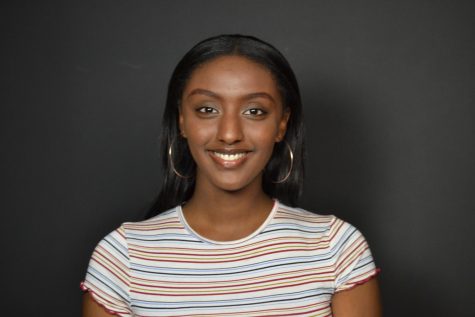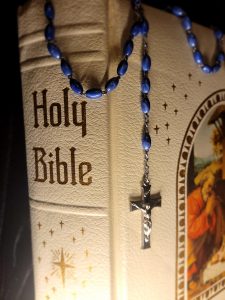Do it for the Culture
February 2, 2018
America’s culture is dependent on the customs and traditions of its people, especially in today’s society. We are built on a foundation that has absorbed styles and morals from many races and ethnicities. Music, food, and fashion are only a few of the things that have contributed to the melting pot. However, sometimes cultures and their people are taken advantage of to morph into a trend.
According to the Cambridge Dictionary cultural appropriation/misappropriation is defined as, “the act of taking or using things from a culture that is not your own, especially without showing that you understand or respect the culture.”
Cultural appropriation has caused a lot of controversy in the fashion industry, as companies have been making and selling clothing based off of clothing that actually belongs to specific cultures.
For example, Urban Outfitters has come under fire for selling traditional African and Asian clothing. They discredited the origin of the clothing so that it could be sold and distributed to all Americans.
When traditional clothing is widely distributed by big brands to everyone, it becomes a trend and loses the significance connected to its original culture, which is offending to many people who adhere to those lifestyles.
Norma Sanchez, stated, “They are using it as trend and they don’t respect the culture, which is not okay. I don’t think it can ever be justified because culture is what defines you.” Her point highlights how unique and integral culture is to each person. If everyone starts wearing a tradition/seasonal piece from one specific culture, it loses its significance because it is no longer original and instead becomes a craze.
Although cultural appropriation is usually seen as an offensive act by the beauty industry, it is also still advocated in a sense.
When I mentioned it to Hayley Osias, she had mixed thoughts on it. However, she ultimately said that it was a good and a bad.
Osias said, “The fashion industry could make clothings from the other cultures and inform where it came from. They can make some money from it, but they shouldn’t be keeping it all for themselves. Instead they should donate it back to the countries it originated from.” Osias noted that cultural appropriation should recognize the origins of the clothing and donate the money back to the countries the clothing came from.
Even though it may be giving credit to the origins of a piece, that does not eliminate the problem of lack of originality that the fashion industry must have to “make” clothing. I am a first generation child to Ethiopians and I have seen East African culture exploited before. My culture is part of my backbone, and I’m proud of it.
However, when I see high fashion brands like Alexander McQueen take sacred traditional pieces of clothing from my culture, like the Kaaba (a traditional wedding cape), and sell it for thousands of dollars without giving credit to its origins, it seems like exploitation.
It seems interesting that the beauty industry is okay with making cultural pieces from diverse and sacred peoples, when their models are often all but diverse. From their size, race, ethnicity, hair, and skin the models that wear the clothing are never representative of the piece they are wearing.
There is a lack of representation and even the makeup industry is a huge part of that. Megan Wells stated, “There is a lot of focus on lighter skinned people. There are so many shades of makeup for lighter skin tones but only three or four generic shades that are darker.”
Brands like Tarte are infamous for lacking a wide shade range because they only carry fairer complections. Over time, however, brands like Fenty Beauty, Lancome, Iman Cosmetics, and Covergirl have come forward with more inclusive makeup for many skin colors ranging from pale to dark with many shades between.
YouTubers of color, like Jackie Aina, have highlighted their struggles with the beauty industry because of its lack in diversity. Their experiences have encouraged and pushed many brands to widen their color ranges and include more models with darker complexions. Yet, there is still a problem in the beauty industry, that being the marketing of products to lighter completions.
Over time , however, brands like Fenty Beauty, Lancome, Iman Cosmetics, and Covergirl have come forward with more inclusive makeup for many skin colors ranging from pale to dark with many shades between.
Youtubers of color, like Jackie Aina, have highlighted their struggles with the beauty industry because of its lack in diversity. Their experiences have encouraged and pushed many brands to widen their color ranges and include more models with darker complexions. However, a large gap in the beauty industry is still consumed in marketing to lighter complections.
As fashion and beauty grow in society, their brands are only more critiqued or encouraged because people are becoming more and more aware of their effects of brand diversity. Representation is important in molding the cultures and thoughts of incoming generations. If we continue to appropriate sacred cultures and traditions, they will become trend and sooner or later no one will know it’s beginnings, but know its end as a trend.
In the same way, as future generations see the lack or growth of people who look like them modeling and brands that fit them they will grow to accept or reject their own characteristics and features.








